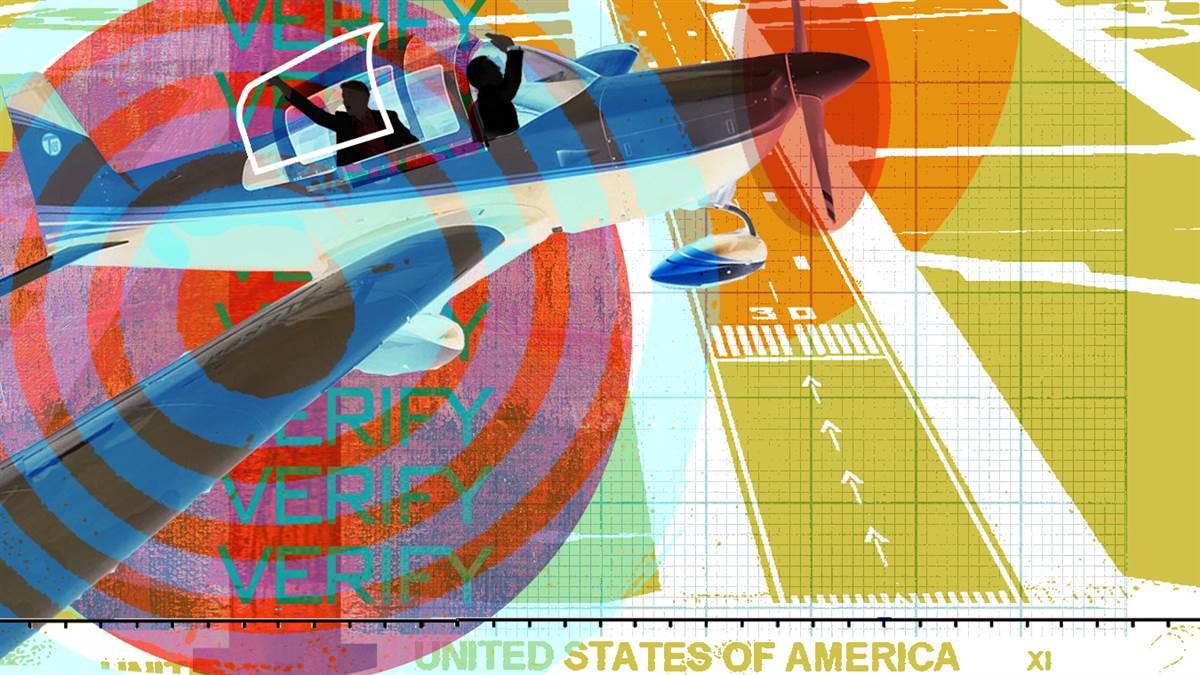Never Again: Open canopy
Trust, but verify
By Martin T. Murat
“You know, you can fly that plane with the canopy open,” said a fellow aero club member as we passed him on the ramp. My buddy, James, and I exchanged looks, both thinking the same thing: Awesome.

It was the late 1980s, and we belonged to a great aero club at Ellington Field (EFD) in Houston. The ink was still drying on my private pilot certificate, and James and I enjoyed flying whenever the budget would allow. Among the variety of airplanes that the club had were a Grumman Tiger and a Cheetah, both fixed-gear, four-place, single-engine machines. The difference between them was that the Tiger had a 180-horsepower engine and the Cheetah a 160.
When payday came around, we met up at the club on a warm, muggy evening for our open-canopy flight. We performed a careful preflight inspection, buckled up, and taxied out to Runway 17R. Ellington Field was a great place to fly out of. One side of the field was occupied by NASA, which flew T–38 jets regularly, and the other end of the field housed the Air National Guard, where F–16s sat armed and ready in revetments near the approach end of our departure runway.
The first hint that something wasn’t right came at about the same time as the end of the runway.As was our usual practice, we taxied to the Taxiway Charlie intersection of Runway 17R, and awaited takeoff clearance. It came moments later, and we started our takeoff roll on the 4,500 feet remaining, canopy in the full open position. The first hint that something wasn’t right came at about the same time as the end of the runway. As we sluggishly became airborne, air pressure was pulsating on our ears and the turbulence in the cockpit was extreme. Our climb rate was terrible, maybe 100 feet per minute at best. I thought we were having engine problems, as I had never seen such poor performance. The throttle was pushed full forward, and the engine instruments were all normal, so I ruled that out.
The cause dawned on us both at about the same time as we glanced behind us at the open canopy. Reaching backward, over our heads, we struggled desperately to close it. In the full open position, it sat just out of arm’s reach, in fact, I had to loosen my seatbelt just to get my fingers on it.
Runway now behind us, we continued barely climbing as we crossed Highway 3. The canopy appeared to be stuck, as it would not budge. Knowing how desperately we needed that canopy closed, we both leaned way back, seat belts loosened, and reached for the canopy with all of our hands. It must have been quite a sight for folks on the ground, us both partially standing up reaching back, canopy wide open, neither of us on the flight controls. We tugged and tugged on it and it began to move ever so slowly. It became easier to move the farther forward it came, and we finally were able to get it shut and latched with a satisfying “click.” Thankfully, the climb rate increased substantially and we were able to complete a normal pattern.
We had gambled both of our lives on a single comment made by a fellow club member.Once we got on the ground, we immediately dug out the pilot’s operating handbook and read up on the topic. We found that yes, it is possible to fly with the canopy open in flight, but only a certain number of inches and certainly not for takeoff. In hindsight, the situation was made worse because of the summer density altitude and our decision to make an intersection takeoff. We were extremely lucky that we didn’t get too slow, lose control, or have the canopy break off (and take the tail with it). We had gambled both of our lives on a single comment made by a fellow club member. I have since learned that instead of taking what a fellow pilot says at face value, I can say, “That sounds right, but let’s look it up to be sure.” I think President Ronald Reagan said it best: “Trust, but verify.”
Years later, my co-pilot and I were in Jackson Hole, Wyoming. As we hung around the FBO waiting for our afternoon airline flight home, we were approached by a Gulfstream pilot who offered us a ride to Houston since his crew had an empty leg. A comfy ride home in a Gulfstream sounded infinitely better than experiencing a multi-leg regional airline ordeal. We were about to take him up on his offer when he added, “It’s no biggie, but the slats and flaps are inoperative on our airplane.” Exchanging looks with my own co-pilot, I asked the Gulfstream captain, “Is it legal to fly that airplane without slats and flaps, and what does the performance data say?” He responded with, “Well, there is no data for that, but you needn’t worry, because I have over 10,000 hours and I know what the airplane can do.”
“Thanks for the offer, but we’ll just go ahead and wait for our airline flight.”AOPA
Martin Murat lives in Sugar Land, Texas, and is a corporate Gulfstream G150 captain.


